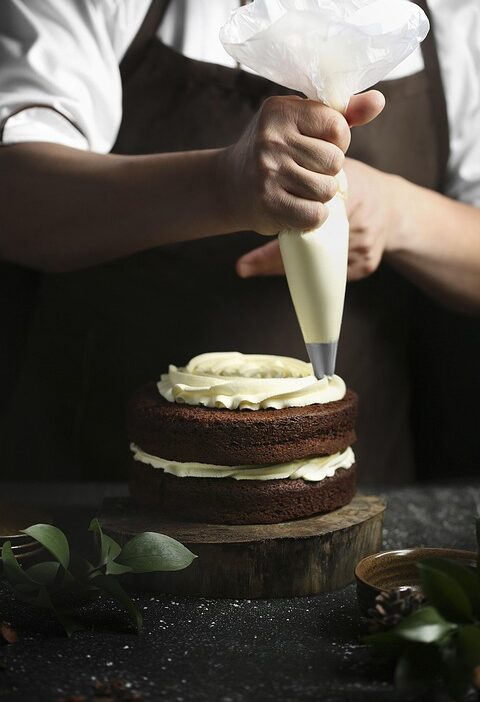Sourdough bread has experienced a renaissance in recent years, adored for its complex flavors, chewy texture, and the satisfaction of homemade baking. At the heart of every perfect loaf is a robust sourdough starter, a living culture of flour and water that harnesses wild yeast and beneficial bacteria. If you’re ready to embark on this culinary journey, here’s a comprehensive guide to cultivating your starter and mastering the art of sourdough loaf baking.
Understanding Sourdough Starter
A sourdough starter is a mixture of flour and water that ferments, developing natural yeast and lactic acid bacteria over time. This fermentation process not only leavens your bread but also contributes to its unique tangy flavor profile.
Why Go Sourdough?
- Flavor: The natural fermentation enhances the depth and complexity of flavors.
- Texture: Achieving that perfect crust with a soft, airy interior is easier with sourdough.
- Nutrition: The fermentation process can help break down gluten and phytates, making the bread easier to digest and its nutrients more bioavailable.
- Sustainability: Once established, your starter can be maintained indefinitely, providing a continuous supply of homemade bread.
Cultivating Your Sourdough Starter
Step 1: Ingredients
- Flour: Start with all-purpose flour. You can then experiment with whole wheat or rye later for added flavor and nutrients.
- Water: Use filtered or bottled water to avoid chlorine and other additives found in tap water.
- Time: Patience is key! The process takes about 5 to 7 days to create a strong starter.
Step 2: The Initial Mix
- In a clean jar, combine equal parts flour and water. Begin with 100 grams of each (about ¾ cup flour and ½ cup water).
- Stir until combined, cover loosely with a cloth or lid (to allow airflow), and let it sit at room temperature for 24 hours.
Step 3: Feed Your Starter
- After 24 hours, you may start to see bubbles, indicating fermentation. Discard half of the starter (about 100 grams).
- Add 100 grams of water and 100 grams of flour, mix, and let it sit again for 24 hours.
- Repeat this feeding process daily. Your starter should become more bubbly and rise significantly within a few days.
Step 4: Check for Readiness
Your starter is ready when:
- It doubles in size within 4 to 6 hours after feeding.
- It has a pleasant, slightly tangy smell.
- It passes the “float test”: take a small spoonful of the starter; if it floats in a glass of water, it’s ready to use.
Mastering the Sourdough Loaf
Once your starter is thriving, it’s time to bake!
Ingredients for Your Dough
- 500 grams bread flour
- 350 grams water (70% hydration)
- 100 grams active sourdough starter
- 10 grams salt
Step 1: Mixing
- In a large mixing bowl, combine the flour and salt.
- Add the starter and most of the water (retain about 50 grams for adjustments).
- Mix by hand until a shaggy dough forms. If necessary, add remaining water until fully combined.
Step 2: Autolyse
Let the dough rest for about 30 minutes. This allows the flour to hydrate and begins gluten development.
Step 3: Kneading and Bulk Fermentation
- Knead the dough in the bowl or on a floured surface for about 5-10 minutes.
- Place the dough back in the bowl and cover it. Let it rise for about 4 to 5 hours, performing stretch and folds every 30 minutes during the first 2 hours.
Step 4: Shaping and Second Rise
- Once the dough has roughly doubled, gently turn it out onto a floured surface.
- Shape it into a round or oval loaf, depending on your preference.
- Place it in a well-floured proofing basket and cover it. Let it proof for 2 to 4 hours at room temperature or overnight in the refrigerator for enhanced flavor.
Step 5: Preheat and Bake
- Preheat your oven to 450°F (232°C) with a Dutch oven inside.
- Once it’s heated, carefully transfer the dough into the Dutch oven. Slash the top to allow for oven spring.
- Cover and bake for 30 minutes. Remove the lid and bake for an additional 15-20 minutes until golden brown.
Step 6: Cool and Enjoy
Remove the bread from the oven and let it cool on a wire rack for at least an hour before slicing. This allows the crumb to set and enhances texture.
Tips for Success
- Patience: Sourdough baking is as much about intuition as it is about following directions. Don’t rush the fermentation processes.
- Hydration: Dough can vary in hydration. Adjust water levels based on your flour’s absorption.
- Experiment: Once comfortable, experiment with different flours, hydration levels, and fermentation times to find your sweet spot.
Conclusion
Cultivating a sourdough starter and mastering the loaf is an enriching experience that connects you with ancient baking traditions. With practice, you’ll create delicious, tangy loaves that showcase the unique characteristics of your existing culture. So grab your flour and water—your sourdough adventure awaits!



